

Canning, pickling and fermenting aren't just for grandmothers anymore! Food preservation has permeated every culture at nearly every moment in time. That's because food by its nature begins to spoil the moment it is harvested. So, ancient man had to come up with a way to preserve food for later use. In ancient times, they used the sun and wind. Today's home cooks use water baths and Instant Pots. From drying to freezing to fermenting to pickling to curing to canning, each culture has different ways of preserving its local food sources. In this guide, The Chopping Block explores three of those methods home cooks regularly use: canning, pickling and fermentation.
1: Intro to Canning, Pickling and Fermentation
3: How to Safely Can Vegetables and Fruit
7: How to Host a Canning Party
1: Intro to Canning, Pickling and Fermentation
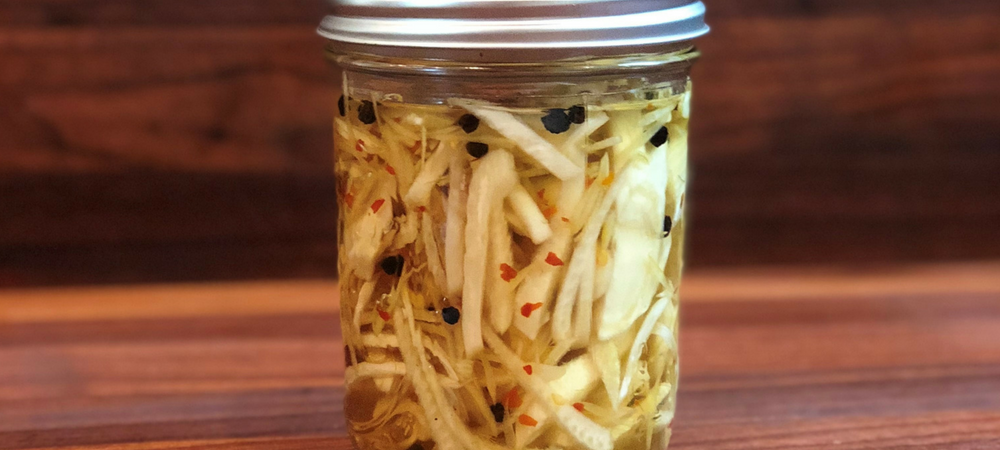
It can be very confusing to understand the differences between canning, pickling and fermentation. They are all ways to preserve food but each uses a different method.
Canning
Canning is the process in which foods are placed in jars or cans and heated to a temperature that destroys microorganisms and inactivates enzymes. This heating and later cooling forms a vacuum seal. The vacuum seal prevents other microorganisms from recontaminating the food within the jar or can. There are two types of canning methods: water bath and pressure, which we will delve into later in this guide.
Pickling
Pickling is preserving foods in vinegar (or another acid). Water, salt and vinegar (and sometimes sugar) are combined and sometimes heated and then fruit or vegetables are immersed in that liquid. Vinegar (which is just juice or wine that has been fermented) has minimum 5% acidity, which causes changes in flavor and texture in foods and acts as a preservative. Pickling is in theory, controlled decay. A food processing authority at Cornell University describes it like this to Food & Wine: "When living organisms die, they activate several responses in the tissue that trigger the release of enzymes that start to break down the vegetable. The acid from the vinegar, along with naturally forming acids in the food itself, slows down that decaying process." It's important to note that vinegar pickling involves no fermentation.
Fermentation
True or wild fermentation is fermentation that relies on organisms spontaneously present on the substrate or in the air, rather than introduced. It was discovered, rather than invented. Fermentation not only preserves foods, but it also creates more nutritious foods and is used to create more palatable foods from less than desirable ingredients. Microorganisms responsible for fermentation can produce vitamins as they ferment. This produces a more nutritious end product from the ingredients.
It's clear from the methods described above that these are three very different ways to preserve food. The reason why these terms are often confused is because you can apply one to others. For instance, you can preserve or can a recipe that is pickled (think quick pickle) but as we now know, we need air and spontaneous organisms to create a true ferment. That being said, you can also make a ferment (like a kombucha or sauerkraut) and can it, in order to preserve it, so refrigeration is not necessary.
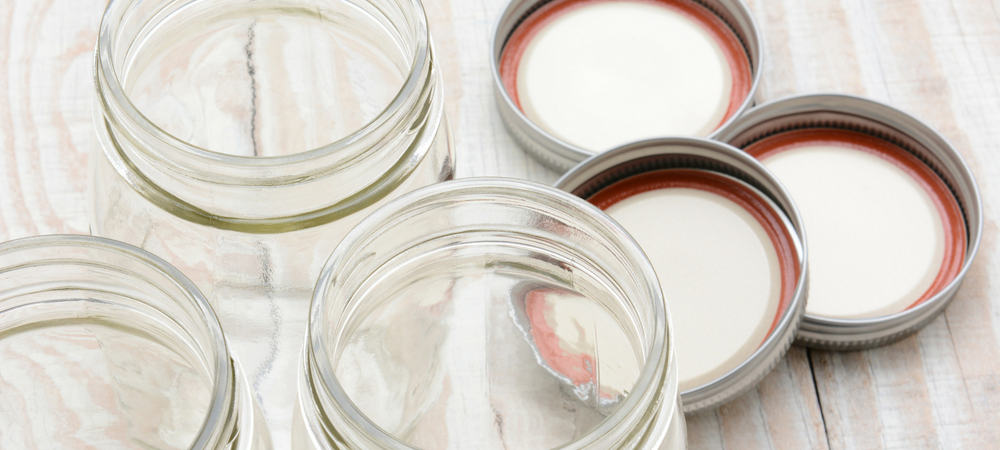
A big part of home preservation that can be intimidating to home cooks is gathering the equipment you need. But you don't need as many tools and gadgets as you might think. In fact, you may already have a lot of this in your own kitchen right now!
First, we'll start with the must haves for canning.
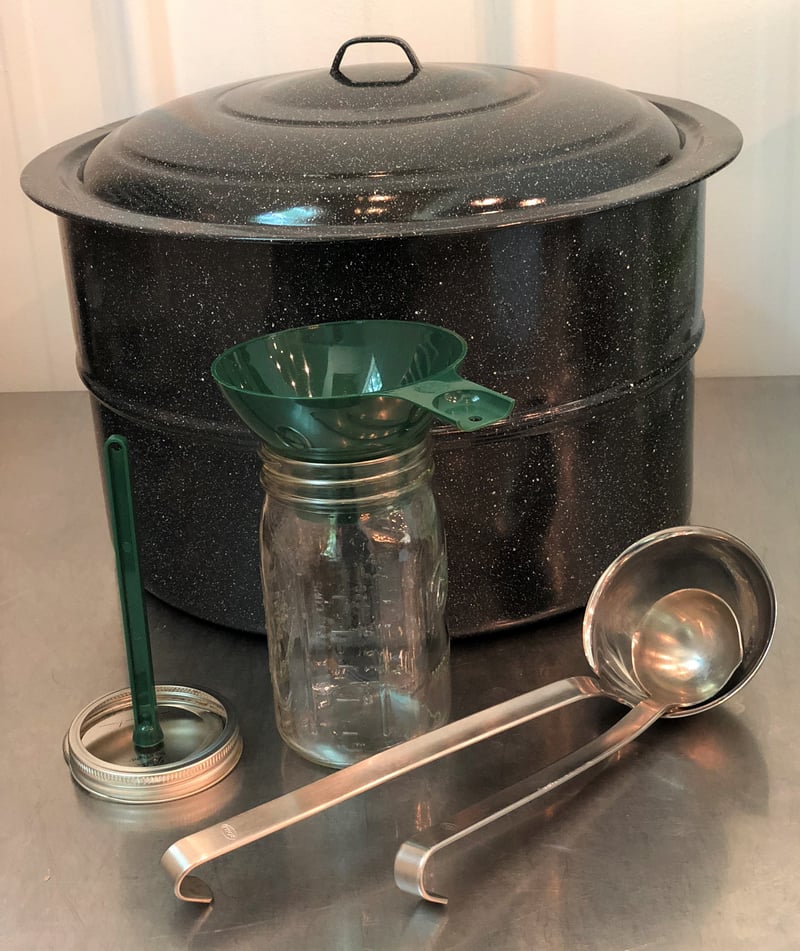
Jars
Canning jars, also known as mason jars, are created specifically for canning. They come in several standard sizes, including quart, pint, half pint and 4 ounces. The most common brands today are Ball and Kerr. The size you choose will depend on what you’re canning and how much you’ll need to use at one time. Jars also come in two different sizes at the opening at the top of the jar, either regular or wide mouth. Either will work fine, but wide mouth jars make it easy to transfer food in and out of the jar. Canning lids will come in two pieces: a lid and a rim.
Water Bath Canner
You can buy a large pot that’s made specifically for canning, known as a “water bath canner” which will hold multiple pint jars. Or, if you aren't yet ready to buy a canner, you can simply use a large stock pot with a lid and a rack. It's important to always use a rack because if the jars rest directly on the bottom of the pot, they can crack open.
Ladles
You'll use these to transfer food into your jars so having a couple of various sized ladles will come in handy.
Funnel
Just like there are wide-mouthed jars, there are wide-mouthed funnels. These definitely help prevent messes in the kitchen.
Stir Stick
This tool is used to get rid of little air bubbles in your filled jars before they are sealed. Chopsticks will work just as well.
If you have given canning a try and know you want to do more of it, you'll want to invest in a few more pieces of equipment.
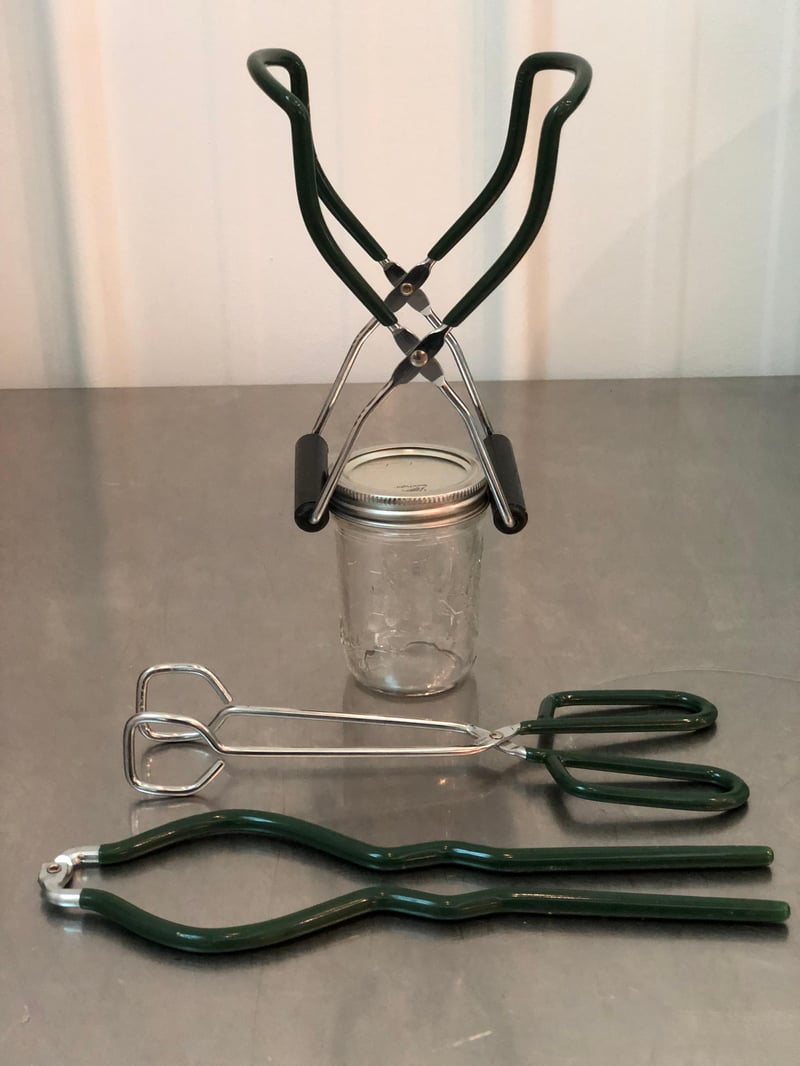
Jar Lifters
This tool makes the canning process much easier, safer, and is generally inexpensive. A jar lifter has a rounded end coated in rubber that will securely grab a mason jar when it’s in the hot water so you can transfer it out of the canner without it slipping. You could get away with using tongs with rubber bands around the ends in the meantime.
Everything you'll need for pickling is listed in the canning section above. If you are planning on just quick pickling and not processing those foods, you'll need even less equipment, mainly just containers.
The equipment you'll need for fermenting is a little bit different from canning. These are considered the most important pieces.
Vessels
Fermenting vessels range from wide-mouth glass jars to ceramic crocks. What you use ultimately depends on what vegetable you're fermenting and your personal preferences. Mason jars with the metal cranks are great because you can create an anaerobic environment that is self burping. You can also use a canning jar and tightly-sealed lid. The advantage to this vessel is that exposure to oxygen is reduced, so the chance of mold forming on the surface is reduced. A disadvantage is that the jar requires more attention. When using a tight lid, you'll need to burp the fermenting jar daily. As vegetables ferment, carbon dioxide can build up. You'll need to burp the jar to release excess pressure and avoid overflow or explosions.
Ceramic fermentation crocks are a good choice for making large batches of fermented vegetables. Food-grade porcelain is generally safe for fermenting vegetables, but be sure to avoid decorative pottery that is not food grade. We don't recommend using plastic for fermenting. If your plastic container is damaged or scratched, those defects can harbor foreign bacteria and even food-grade plastic often contains undesirable chemicals that can affect the food.
You'll want to purchase fermentation grade bottles so that they don't run the chance of exploding.
Scale
Pounding Tool/Wooden Spoon
If you're fermenting sauerkraut or other vegetables that ferment in their own juices, you will need some sort of pounding tool to help break apart the vegetables and compress them together in the fermenting vessel. There are tools designed to do this or you can just use a wooden spoon.
Coffee Filters, Cheesecloth and Rubber Bands
You will use these items to cover your fermenting projects. An advance of using one of these covers is that it is easy to peek in and check on the fermenting stage. The disadvantage is the mold or yeast can form on the surface, but that's usually harmless and can be removed and discarded. For smaller jars, a paper coffee filter secured with a tight rubber band or canning lid ring works well to keep pests out and allow fermentation gases to escape. For small or large containers, cheesecloth secured with a rubber band is sufficient as well.
For those interested in fermenting on a regular basis, you'll likely benefit from buying a few more products to make the process easier.
Fermentation Weights
It's important to keep vegetables submerged under the brine during fermentation to help reduce exposure to oxygen. To do this, you can use any clean object that is free of glues or other chemical coatings such as a glass jar. You can also purchase fermentation weights which are designed to serve this function.
pH Strips/Meter
pH strips or a pH meter are used to measure the acidity of foods. A meter will be more accurate than strips, but strips will be more affordable. For the purpose of home fermentation, either will work.
Fermentation Kit
Fermentation can be scary to a beginner when you consider you will encounter mold, yeast and bacteria. Fermentation kits help take the guesswork out of fermenting in small batches. These kits almost eliminate all of the usual suspects when it comes to fermentation fails. Some will include a thermometer or sanitizer as well. You can certainly ferment without a kit but for some, they provide a certain piece of mind.
Food preservation is one instance where you need to stick pretty close to the recipe, and only use approved canning recipes for preserving. There’s a whole science behind this, to make sure there is enough acidity in the food to keep bacteria from spoiling your food. By following the below suggestions, you can be sure you are adhering to food safety guidelines.
1. Wash all jars and tops with hot soapy water. Be sure that the jars are hot before you pack them or else they might crack.
Pro Tip: You can also sterilize your clean Mason jars in the oven. Preheat your oven to 225º, and place the jars on a sheet tray. Allow to heat for 20 minutes. We still recommend heating the flats and screw bands in a saucepan. Bring the water to a gentle simmer, and keep warm until ready to use. The hot water bath will make the lids malleable.
2. Pour in the hot brine to cover the vegetables or pour in your food ready to be canned. Use a canning funnel to ensure the rims on the jars stay clean.
3. Remove the air bubbles by slowly raising and lowering a stir stick or chopstick around the inside of the jar. Pour in more brine if needed.
4. Make sure the rims on the jar are clean before putting on the lids. If not, wipe them with a damp cloth. Secure the lids tightly by hand.
5. Set a rack in a deep pot that’s half filled with water and put the pot over high heat.
Pro Tip: Using a pasta pot with an insert is a great alternative to a water bath canner.
6. When the water is almost boiling, you can place the jars in the pot. Add more hot water if needed to cover the jars by 2-inches. Bring the water to a full boil. Keep it boiling for the amount of time indicated in your recipe, usually 10 to 20 minutes.
7. When the time is up, remove the jars. Set them on a dry towel and let them cool, undisturbed, for 12 hours.
8. After the jars have cooled, check to make sure that the jar has sealed by pressing on the lid. When a vacuum is created, the lid will not bounce back. You should hear the popping sounds while the seals are being created.
9. Store the sealed jars in a cool dry place, or give to friends and family! Any jars that fail to seal should be stored in the refrigerator and used within the same amount of time as you would use them after opening the jar. Depending on what the food is, that could be anywhere from a few days to a few months. So if you canned a jar of jam or pickles properly and then opened the jar, it will last for months. But foods like roasted peppers or Giardiniera that are made with less vinegar and more oil may lose their freshness more quickly.
Yes, You Can Can!
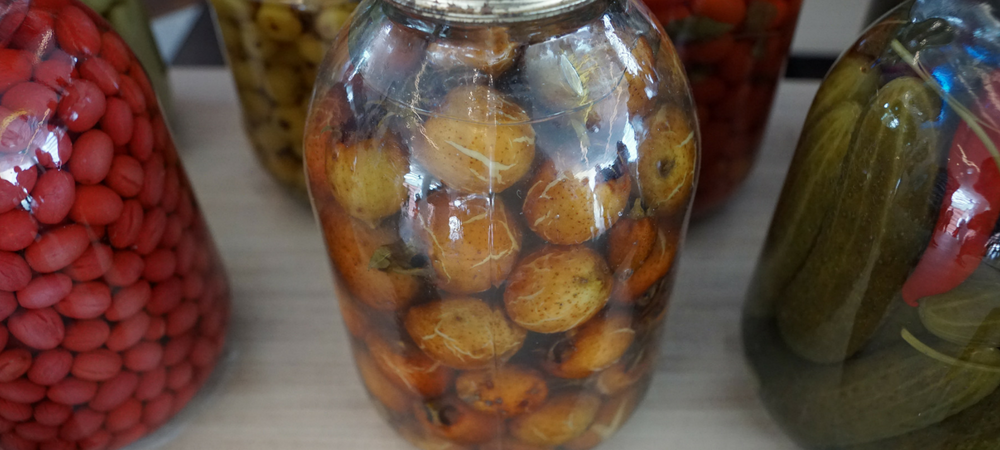
Canning is taking cooking one step further. As we explained above, canning involves processing food in closed glass jars at high temperatures. The heat interrupts natural spoilage by destroying food contaminants and, at the same time, removes air from the jars. As the jars cool, a vacuum seal forms – to prevent recontamination.
There are two home canning methods: water bath canning and pressure canning. Understanding the components and difference between the two processes will help you choose the method best for the foods you want to preserve.
Water bath canning is ideal for high acid foods and recipes that incorporate the right amount of acid. The combination of time and temperature destroys mold, yeast and enzymes that cause spoilage while creating a vacuum seal. You will use this method for:
Though you may find yourself using the terms jams and jellies interchangeably, there is a difference between the two. Jelly is made from fruit juice and jam is made from the whole fruit. You can make jams or jellies out of most any fruit, but certain fruits lend themselves more naturally to one or the other.
For jellies, you need to puree the fruit and let it strain overnight in a fine sieve or cheesecloth, trying to stir or squeeze as little as possible so you don’t get the pulp of the fruit into the juice. Jellies are often made from thick skinned fruit like grapes, apples and currants. These fruits tend to be high in pectin as well, which aide in the jelly setting up properly.
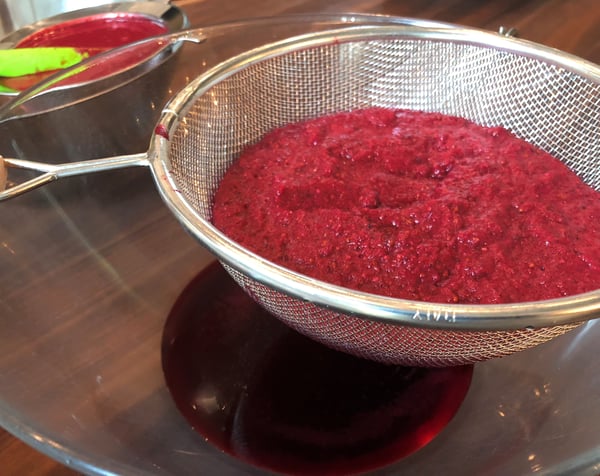
Currants in sieve
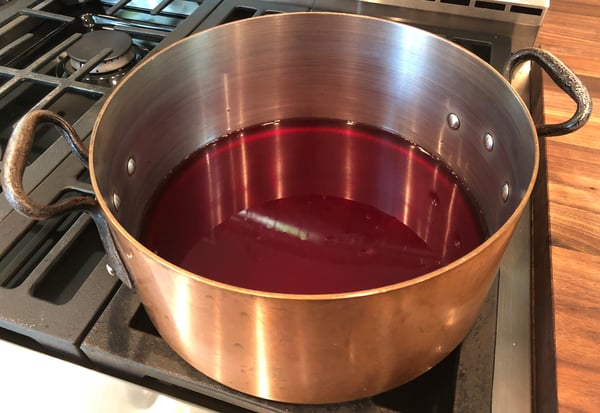
Currants strained
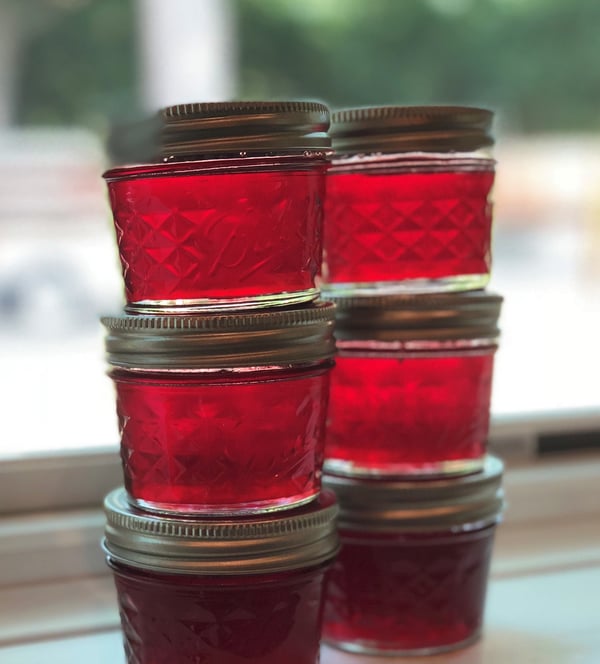
Currant Jelly
Whole fruit jams are often made with whole stone fruits that have more palatable skins such as cherries, apricots, peaches and plums.
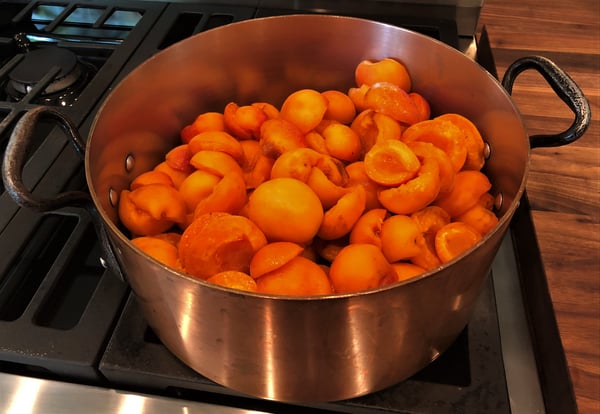
Apricots
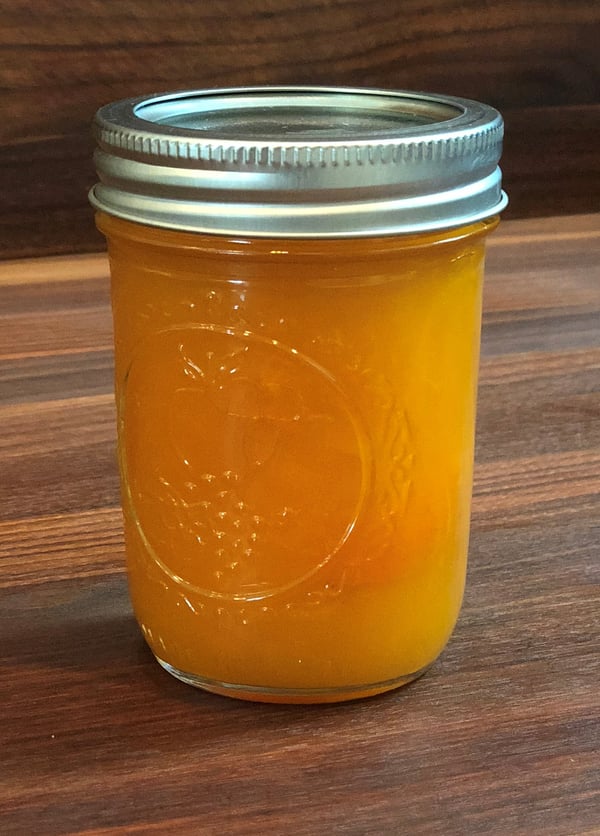
Apricot jam
Berries are often made into jams that are strained so they land somewhere between a jam and a jelly. Half or all the fruit can be pureed and strained to remove the seeds many people find objectionable. The procedure for making jams and jellies is essentially the same other than the process of straining the fruit prior to processing.
Give these water bath canning recipes a try!
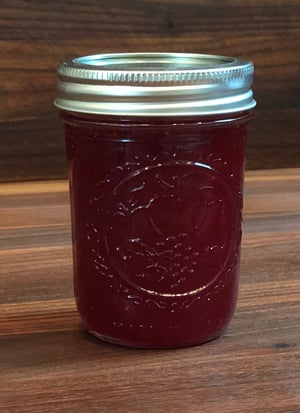 Strawberry Jam
Strawberry Jam
Yield: Makes about 6 half-pint jars
Active time: 55 minutes
Start to finish: 1 day, 55 minutes
8 cups sliced strawberries
1 pack Sure-Jell fruit pectin (see note, below)
6 cups granulated sugar
1/3 cup lemon juice
Pinch of salt
Note:
Recipes that call for Sure-Jell less- or no-sugar-needed pectin have less sugar added to them, and this particular pectin will ensure your jams and jellies set up.
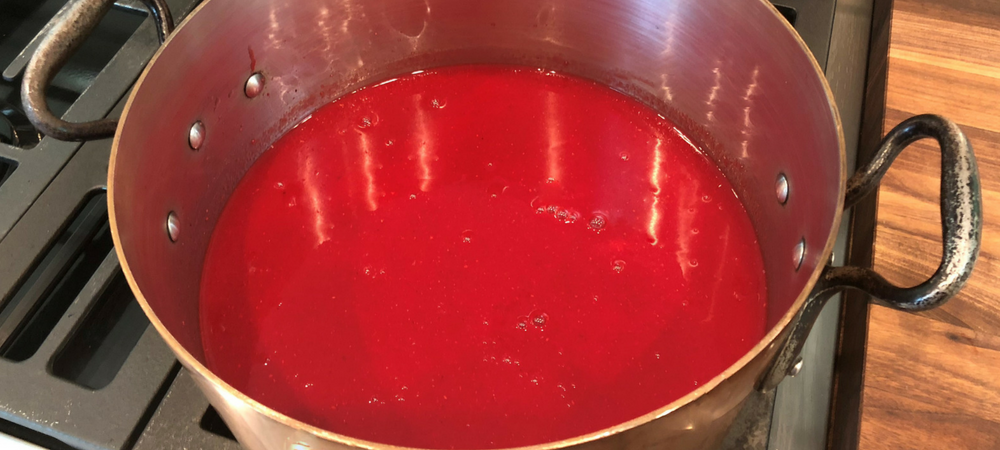
RECIPE VARIATIONS:
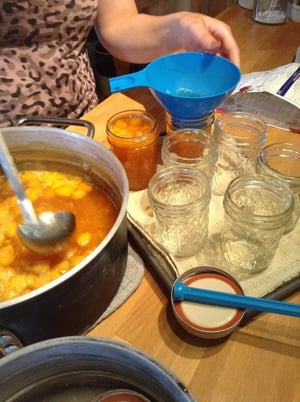 Peach-Vanilla Jam
Peach-Vanilla JamYield: Seven 1/2-pint (1 cup) jars
Active time: 45 minutes
Start to finish: 55 minutes
2 1/2 pounds ripe peaches
1/4 cup lemon juice
1 box (1.75 ounces) fruit pectin
1 teaspoon butter
5 1/2 cups granulated sugar
1 teaspoon vanilla bean paste
Watch The Chopping Block's Owner/Chef Shelley Young demonstrate how to make Blueberry Jam.
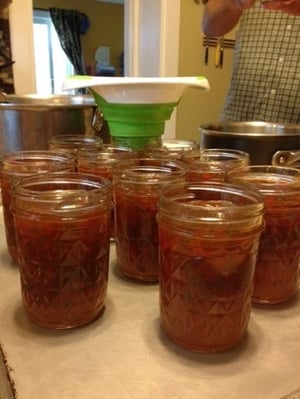 Red and Green Hot Pepper Jelly
Red and Green Hot Pepper JellyYield: Five 1/2-pint (1 cup) jars
Active time: 35 minutes
Start to finish: 50 minutes
3/4 pound red bell peppers, seeded and cut into 1-inch pieces
3/4 pound jalapeños, seeded and cut into 1-inch pieces
3 tablespoons Sure-Jell less- or no-sugar-needed pectin (see note, below)
3 1/4 cups granulated sugar
1 cup white wine vinegar
1 tablespoon butter
3/4 teaspoon kosher salt
1/2 to 1 teaspoon red chili flakes
Note:
Recipes that call for Sure-Jell less- or no-sugar-needed pectin have less sugar added to them, and this particular pectin will ensure your jams and jellies set up.
Chef Sara Salzinski offers additional tips for making this savory jelly in her blog.
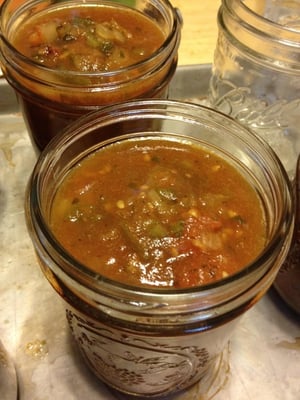 Tomato Salsa
Tomato Salsa
Yield: 5 pint (2 cup) jars
Active time: 45 minutes
Start to finish: 1 hour
1 pound poblano peppers
5 pounds ripe tomatoes
3 jalapeños, seeded and cut into small dice
1 1/2 cups white or yellow onion, medium dice
3 cloves garlic, minced
1 cup apple cider vinegar
1/2 cup fresh cilantro, rough chopped
2 teaspoons dried oregano
2 teaspoons ground cumin
2 teaspoons kosher salt
1 teaspoon to 2 tablespoons granulated sugar to taste
Chef Sara Salzinski offers additional tips for making this salsa in her blog.
The acidity of the food will determine whether it can be water bath canned or needs to be pressure canned. A low pH, below 4.6, will prevent the growth of potentially deadly spoilage bacteria in canned foods. If the pH of a food product is below 4.6, it is classed as acidic, and can be water bath canned. If it is above that, it is classed as non-acidic and must be pressure canned.
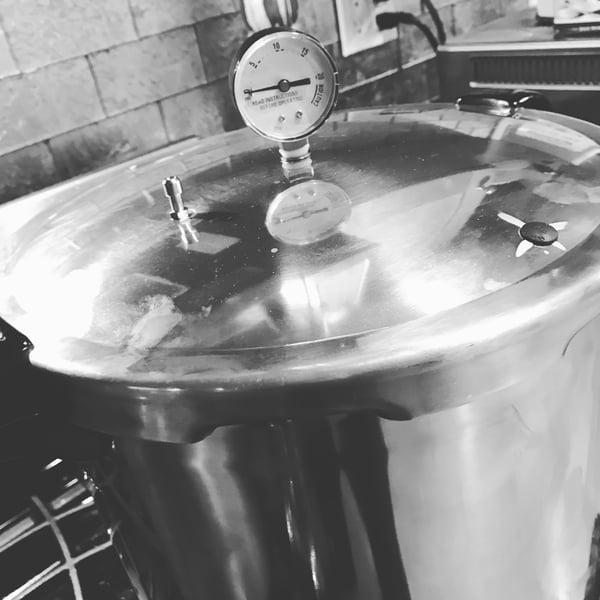
Pressure canning is the only processing method that reaches the high temperature (240°F) needed to safely preserve low acid foods. It is the combination of time and temperature that will destroy foodborne bacteria and create a vacuum seal necessary to prevent spoilage. This process is required to preserve foods and recipes like:
The design of a pressure canner is similar to that of a pressure cooker, just on a larger scale. And yes, just like a pressure cooker, the canner might be very intimidating to a lot of home cooks. But when knowing the right technique of how to use one, it can be the greatest item a DIY kitchen fanatic can have.
Our Ida Dolce offers tips for pressure canning and walks you through the process of using a pressure canner with a dial gauge (including some cool GIFs) in her blog.
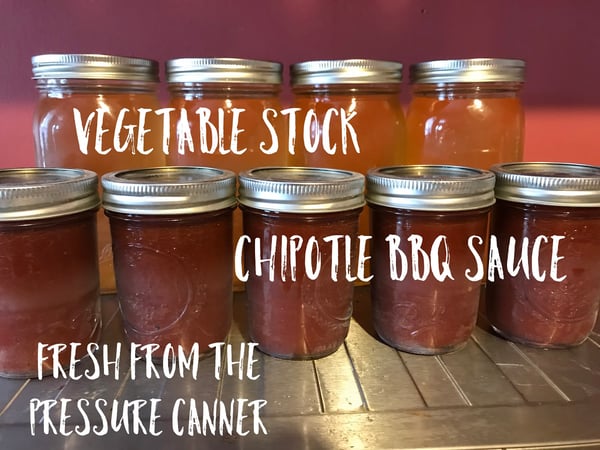
The Hardest Part is Waiting
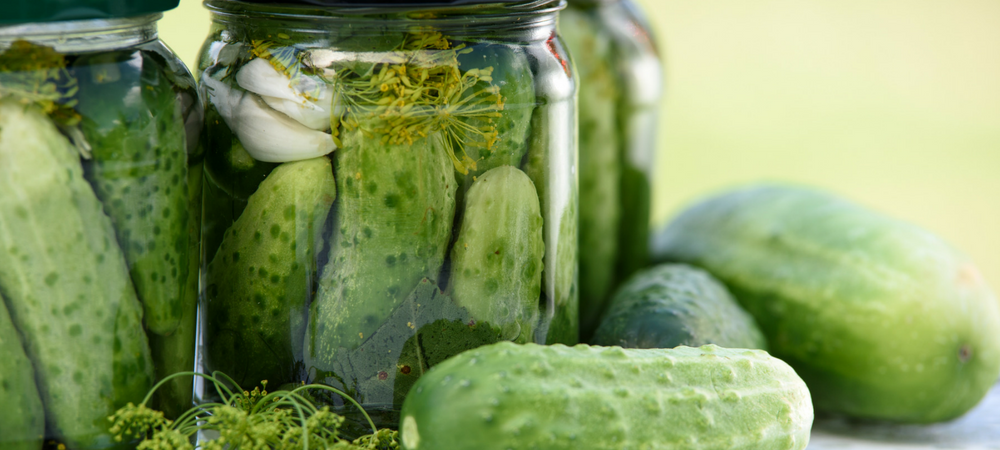
Pickles are no longer just the occasional side dish or sandwich accent. It's safe to say that pickling and even pickle juice are gaining popularity and playing bigger roles on menus across the country. From cucumbers and kohlrabi to lemons and rhubarb, a quick pickle can go a long way to adding acid and crispness to a dish.
Pickling in its quickest form is just boiling a vinegar solution, pouring it over the food, letting it cool and then storing it in the fridge. But those "quick pickles" can only last for about 1 to 3 months in that environment. To extend the preservation power, you must "can" the pickles. Remember, when we said the terms get confusing when one applies to another? In this case, you are pickling the food but then canning/processing it to make it shelf stable so it doesn't need to be stored in the fridge. We'll provide you both types of recipes in this guide.
Pickles need salt and vinegar to help preserve them. To choose the right vinegar, consider how you want your pickles to taste and look. Distilled white vinegar and white wine vinegar are most popular because they won't affect the color of most vegetables. The other common option is cider vinegar, which offers a milder flavor, but causes the produce to darken.
The best salts to use for pickling are pickling (or canning) salt or kosher salt. Pickling salt is pure granulated salt and is free of anti-caking agents, which can cause the pickling liquid to turn cloudy. Kosher salt, however, has large crystals, which do not dissolve as quickly as pickling salt. Either salt is fine, but kosher salt will take more effort to use.
Our Erica Forneret gives more tips on pickling in this post.
Get started on these pickling projects!
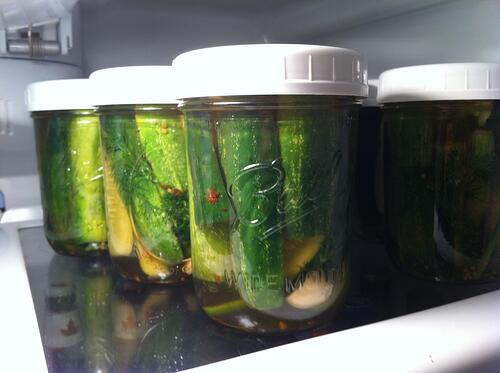 Dill Pickle Spears
Dill Pickle Spears
Yield: 8-9 pint jars
Active time: 40 minutes
Start to finish: 1 week, 55 minutes
8 cloves garlic, sliced
1 bunch fresh dill
4 to 5 pounds pickling cucumbers, ends removed and cut lengthwise into quarters
For the pickling solution:
4 cups water
4 cups apple cider vinegar
8 teaspoons kosher salt
1 cup granulated sugar
4 teaspoons pickling spices
Watch Shelley demonstrate how to make Bread and Butter Pickles.
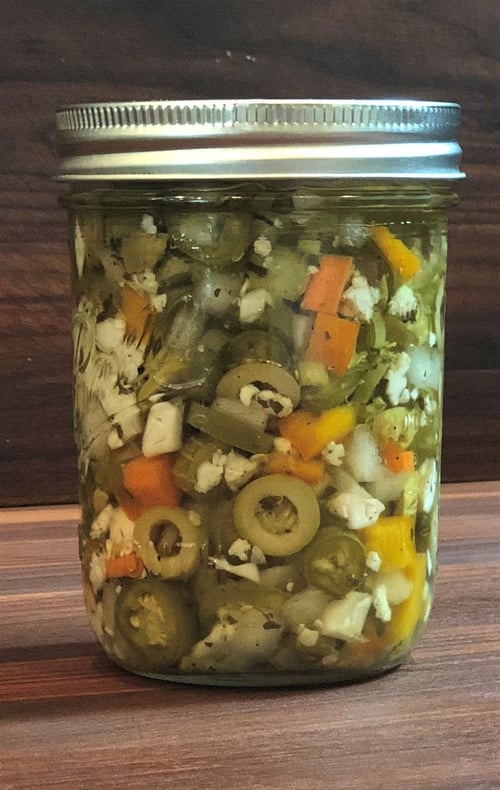 Giardiniara
GiardiniaraYield: 6 pint jars
Active time: 35 minutes
Start to finish: 3 weeks, 2 hours
6 serrano or jalapeño peppers, thinly sliced
2 red bell peppers, small dice
1 stalk celery, small dice
1 carrot, peeled and cut into small dice
1/2 head cauliflower, cut into small florets
1 onion, medium dice
1/2 cup kosher salt
1 cup pimento-stuffed green olives, rough chopped
6 bay leaves
12 cloves garlic
1 teaspoon red chili flakes
1 1/2 teaspoons black peppercorns
6 sprigs fresh oregano
2 3/4 cups white wine vinegar
2 1/2 cups water
4 teaspoons kosher salt
6 tablespoons extra virgin olive oil
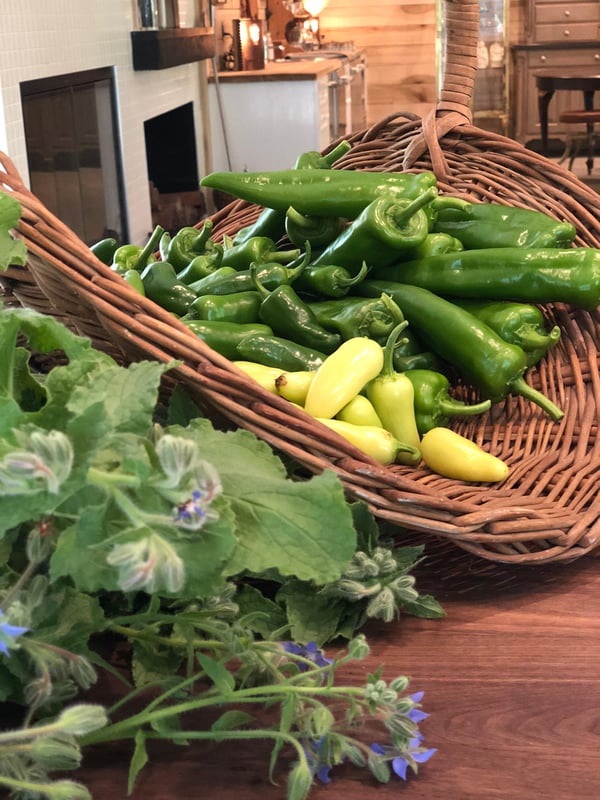
Pickled peppers are very popular this time of year. To learn how to pickle jalapenos, check out this post. Our Chef Roger Coons gives you a step-by-step tutorial for pickling cherry peppers in his blog.
Quick pickles couldn't be simpler to make, but the toughest part is waiting to eat them.
Watch Shelley demonstrate how to make Quick Pickles.
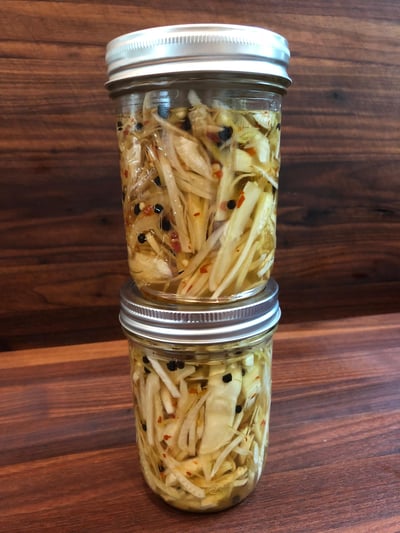 Pickled Fennel
Pickled FennelYield: 2-3 cups
Active time: 20 minutes
Start to finish: 2 hours, 20 minutes
2 cups rice wine vinegar
1/2 cup granulated sugar
4 teaspoons kosher salt
zest of 1 lemon
zest of 1 orange
1/2 to 1 teaspoon chili flakes
1 teaspoon black peppercorns
2 fennel bulbs, halved and thinly sliced
Yield: 2 cups
Active time: 15 minutes
Start to finish: 1 hour, 15 minutes
2 cups rice wine vinegar
1/2 cup granulated sugar
4 teaspoons kosher salt
1 teaspoon fennel seeds
1 teaspoon black peppercorns
2 cups cherries, pitted and halved
Chef Erin Patsiopoulos applies the same techniques to Pickled Grapes in her blog.
Watch Shelley demonstrate how to make Pickled Watermelon Rind.
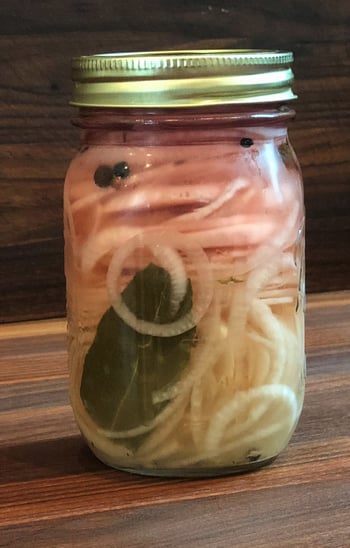 Quick Pickled Onions
Quick Pickled OnionsYield: 1 pint
Active time: 15 minutes
Start to finish: 35 minutes
½ cup apple cider vinegar
1 Tbsp sugar
1 ½ tsp kosher salt
¾ cup water
1 red onion, thinly sliced
2 bay leaves
5 whole peppercorns
5 whole allspice
Combine the first four ingredients in a small mason jar and microwave for 2 minutes.
Add the onions and the rest of the ingredients to the jar, draining off any excess liquid as necessary.
Pickled onions are a really wonderful add-on to so many dishes. These can be slapped on a salad, tacos, a pizza, a sandwich, rice, burgers, potato salad, and so much more! Pickled onions add a really bright, beautiful zing and color to any dish and are definitely worth a try.
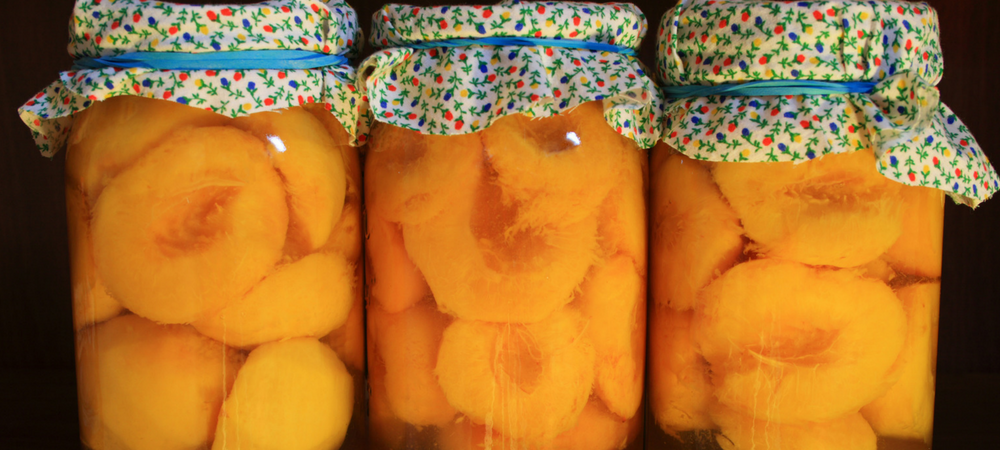
We are no stranger to fermented foods and beverages in our lives: bread, coffee, pickles, beer, cheese, cider, yogurt, wine and soy sauce are all transformed at some point during their production process by microscopic organisms that extend their usefulness and enhance their flavors. Fermentation is by far the most complicated method of food preservation we'll cover in this guide and that's due to so much science being involved. Without getting too technical, we'll use the know-how of The Chopping Block's resident fermentation expert Chef Christy Williams as well as outside resources to help explain the process.
Sandor Katz, the author of The Art of Fermentation (a highly recommended fermentation resource), describes fermentation as "the flavorful space between fresh and rotten."
As we've discussed, pickling and fermenting are both food preservation methods. The confusion between the two often arises because the techniques actually overlap each other. Some fermented foods are pickled, and some pickles are fermented.
We already know that a pickle is simply a food that’s been preserved in a brine or an acid, typically with heat applied. And we know that fermentation doesn't require acid or heat. In fact, it can be accomplished with as little as a container and salt (although more typically goes into it). Fermenting typically takes longer than pickling and ultimately alters the food's color, flavor and texture.
As Cooking Light explains, a fermented food has been preserved and transformed by benign bacteria. Usually, that means that the sugars and carbohydrates present in the food have been eaten by the good bacteria (often lactic acid bacteria). The bacteria then convert that sugar into other substances, like acids, carbon dioxide, and alcohol. Those substances, in term, preserve the food (and add to its tangy flavor). So when you eat kimchi, you consume the flourishing colony of good bacteria that has preserved the cabbage for you.
Here's where pickling and fermenting overlap. Many fermented foods start with a brine so they are also pickled; they are actually fermented pickles. Traditional dill pickles are fermented in salty water, not vinegar. One of the substances bacteria produce during fermentation is acid which is why they end up tasting very acidic.
But not all fermented foods are pickles! For instance, you would never think of sourdough bread, or beer, or yogurt as a pickle.
One of the reasons we are seeing a spike in fermented foods in the past few years is due to the health benefits.
Fermented foods have multiple health benefits. The process of fermentation pre-digests foods. This makes the vitamins and minerals more bioavailable, meaning easier for our bodies to absorb. Fermentation can generate additional nutrients and remove harmful toxins and anti-nutrients, which interfere with the absorption of nutrients. Ferments with live lactic acid producing bacteria support digestion which in turn supports immune function and general well-being. It can help if you have allergies.
Christy has really gotten into fermentation in the past few years because she started eating a lot of probiotics. She also what she calls "project cooking" because she likes the process of nursing something along.
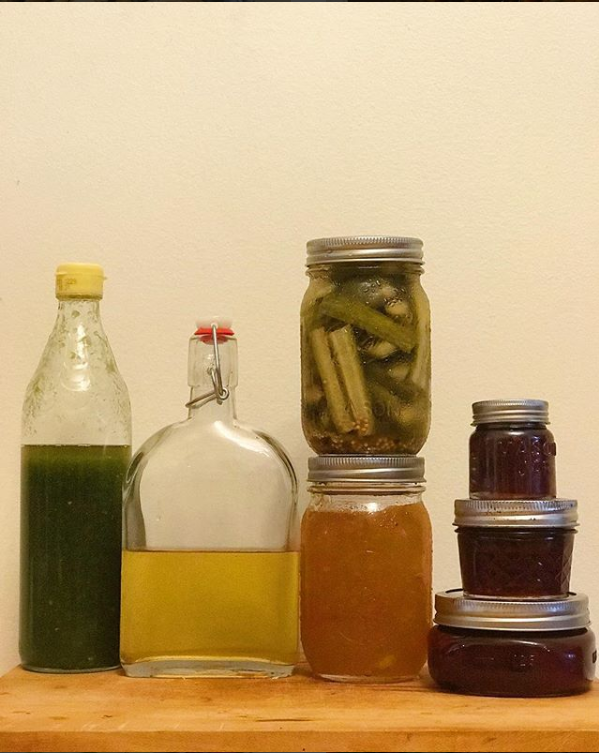
Some of Christy's fermentation projects
First Ferments
For fermentation newbies, Christy recommends starting with sauerkraut because it's particularly easy to make.
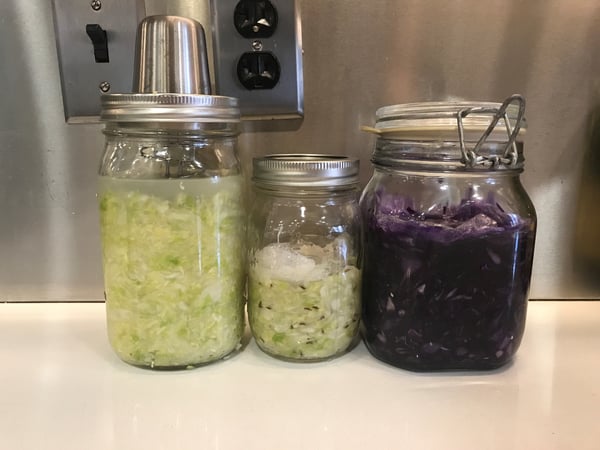
Quarter the cabbage, then slice or shred thinly.
Put the cabbage in a large bowl and toss with salt. You can cover the cabbage and let it sit until the cabbage starts to break down and the juices are released, about 30 minutes. Or, you can choose the more laborious but quicker method and toss and squeeze the cabbage with your hands for about 5 to 6 minutes until it breaks down.
If you are adding the caraway seeds, toss them in at this time.
Pack the cabbage into the sanitized jar tightly. Use a spoon to smash it down. This squeezes the juices out of the cabbage and allows you to get 3 pounds of cabbage into the jar.
Ideally, you will now have enough cabbage juice to cover the cabbage. If not, you will need to make a brine to top it off. Use 4 ½ teaspoons of salt to 1 quart of spring water. Just dissolve the salt in the water and put the rest in the fridge to brine something else like a pork chop or a chicken breast! I often hear people cover the kraut with a towel while it is fermenting, but as far as I can tell, there is no reason for that unless you aren’t willing to burp the jar now and then. I simply put the lids on the jars and set them in a room temperature place to ferment.
The next day, make sure to burp the jar by simply taking the lid off. This is a good time to also confirm the cabbage is underneath the brine. Check the kraut every few days and remove any film, foam or funny stuff floating on the top. You will see bubbling, and that is simply the fermentation happening. When it stops, it's done. If you want to ferment it less, it will be lightly fermented after only a week but usually at 4 weeks, you would consider it completely fermented. Once it is done, pop it in the fridge. It will last for a very long time, or you can can it.
One of the reasons to make your own sauerkraut is so that it doesn’t have to be cooked, like it is in the can. So canning could pose a problem if you follow most directions for it which is to process the quart jars in boiling water for 25 minutes or 20 for pint jars. So if you want cooked sauerkraut, follow those rules. However, if you want more of a fresh sauerkraut then put your filled jars in your water bath canner and bring just to a simmer, remove from water, bring to room temperature and store in a cool dark place. These should keep for a year, just make sure to date the jars!
Notes:
Use the freshest cabbage available. You can tell a head of cabbage is fresh in part by its weight. If it is very heavy and feels solid, that is the best indicator. It means the cabbage is full of moisture, and moisture is what you need in your sauerkraut.
A large jar is easy to use for this recipe because it's easy to sanitize, and you don’t have to figure out how to weight the kraut down. Wash the jar and lid, rinse them well and put them in a 200-degree oven for 30 minutes. This method works especially well if you are doing multiple batches because the jars can stay in the oven until you are ready to use them.
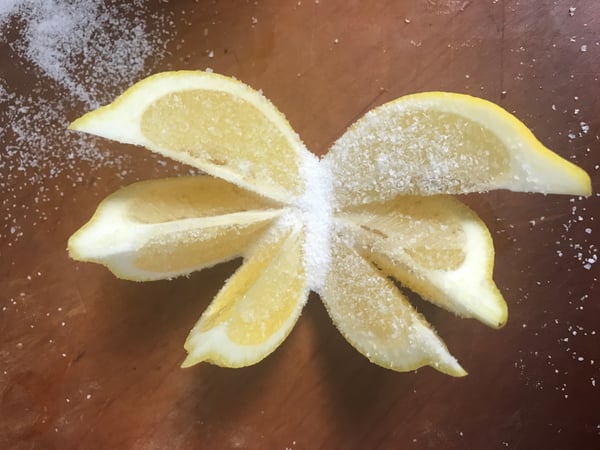
Lemons
Salt
Once you tackled the easy ferments above, it's time to challenge yourself with some more advanced fermentation.
A fermented beverage taking the world by storm is kombucha, which is a sour beverage that starts as a sweetened tea and is then fermented by a combination of bacteria and yeast. Though there are trace amounts of alcohol created by the yeast and the sugar, kombucha is generally considered nonalcoholic because most of the sugar is metabolized by the bacteria.
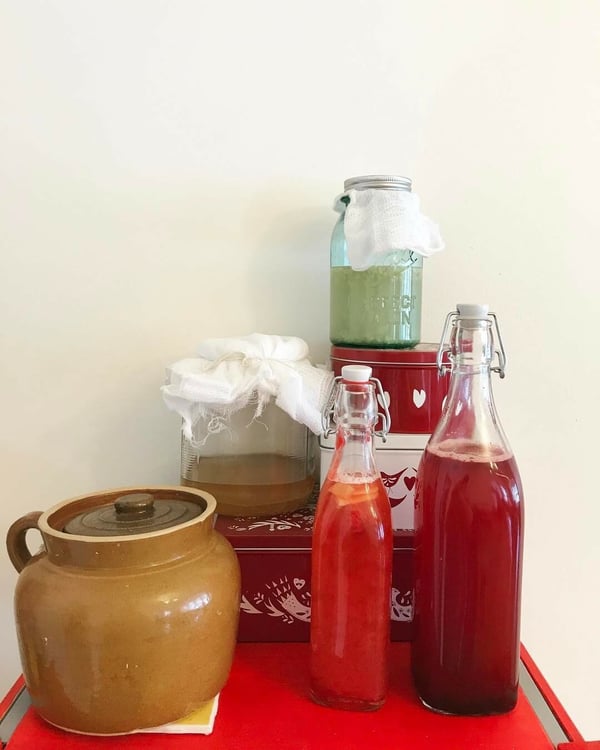
Yield: 1 gallon
Active time: 20 minutes
Start to finish: 8 to 10 days (includes fermentation process)
1 gallon spring water
1 cup raw cane sugar or beet sugar
10 black tea bags
1 mother SCOBY (see section below)
1/2 gallon your favorite juice
How to Brew Kombucha
Equipment you’ll need:
First Ferment Instructions
Ratios:
|
Filtered Water |
Amount of Sugar |
Number of Black Tea Bags |
Size of Scoby |
Amount of Starter Tea |
Fermentation Cycle |
|
1 quart |
6 tablespoons |
6 |
Small (no smaller than 3 inches) |
1/2 cup |
3 to 5 days |
|
2 quarts |
1/2 cup |
8 |
Medium (4 inches) |
1/2 cup |
5 to 7 days |
|
1 gallon |
1 cup |
10 |
Large (6 in, 4 to 6 oz) |
1 cup |
7 to 10 days |
Caring For Your SCOBY Mom
A SCOBY stands for Symbiotic Culture of Bacteria and Yeast or the “mother” that is responsible for fermenting the Kombucha.
A SCOBY can be purchased online, but is easily acquired from other Kombucha brewers as the “mother” will produce a fresh layer after each batch of tea. This layer or “baby” can be peeled off of the original and shared with a friend, stored in a small batch of plain kombucha, or used for continuous brewing. You can also buy a bottle of plain kombucha and grow your own SCOBY by using it as your starter tea for the 1 quart sized recipe. It will take a little longer than 5 days to grow and then ferment the tea.
Your SCOBY feeds off of the tannins in the tea as well as the sugar you use in the recipe. It’s important to use black tea and cane sugar. Any other type of sweetener (honey, molasses, brown sugar, raw sugar, artificial sweeteners) will produce a kombucha that is far too yeasty.
The first ferment is just the black tea, scoby and sugar. Any herbal or fruit flavor you'd like to add isn't introduced until your second ferment. Once your kombucha (first ferment) lightens in color, is lightly effervescent, no longer tastes sweet, and your pH registers anywhere between a 3.4 or 2.8 is technically kombucha. It is at this point you can decide to do a second ferment.
Yield: Approximately 3 cups
Active time: 20 minutes
Start to finish: 2 days, 20 minutes
1 cup whole mustard seeds
2/3 cup water
1/4 cup apple cider vinegar
2 tablespoons honey or maple syrup
1/4 cup whey
2 tablespoons sea salt
1/4 cup freshly squeezed lemon juice
4 cloves garlic, crushed
Yogurt requires a starter to get the fermentation process going. That's commonly accomplished by adding a small amount of already made yogurt to the soon-to-be-yogurt milk. Here's the recipe Shelley used to make yogurt when she attended the Ploughshare Institute in Waco, Texas a few years ago.
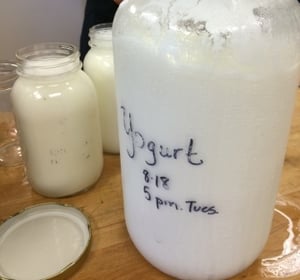 1 gallon whole or skim milk
1 gallon whole or skim milk
½ cup cultured plain yogurt
Today's home cooks are using the Instant Pot to make yogurt which takes a lot of the guesswork out of finding the right temperature to let the milk ferment. The pressure cooker that comes with a "Yogurt" setting maintains the temperature of the milk so that the live active cultures can do their thing. It's takes a little planning since you first need to heat the milk, cool it and add the
Yield: 8 cups
Active time: 10 minutes
Total time: 12 hours 30 minutes (including cooling time)
2 quarts whole milk
2 tablespoons whole-milk, 2%, or skim yogurt with active (live) cultures (Note: Be sure to look for a yogurt with as few ingredients as possible, ideally just milk and bacteria. Additives and thickeners may interfere with the results.)
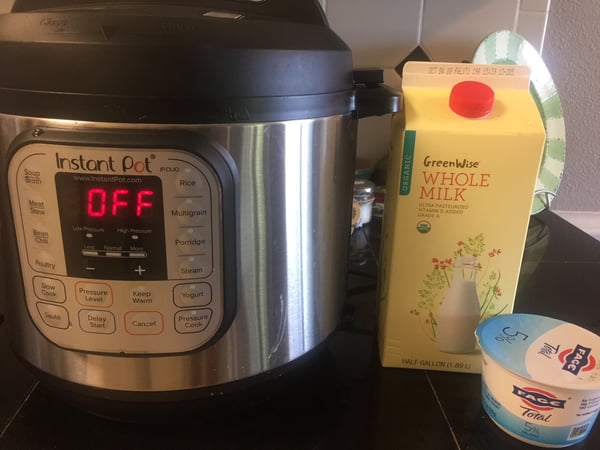
1. Place the milk in the inner pot. Close and lock the lid. Set the valve to Sealing. Press the Yogurt button and then press the Yogurt or Adjust button until the display reads “Boil.”
2. Allow about 30 minutes for the program to finish. When it has finished, press Cancel until the display reads “Off.” Use oven mitts to remove the inner pot (be careful—it’s hot!) and place it on a trivet or other heat-resistant surface. Allow the milk to cool, stirring occasionally, until the temperature drops to 110°F as measured on an instant-read thermometer, about 1 hour. (If you do not have a thermometer, use a small spoon to drip a few drops of the milk on the inside of your wrist. It should feel just above body temperature—very slightly warm but not hot. Err on the side of too cool, since too much heat will kill the necessary bacteria in the yogurt in the next step.)
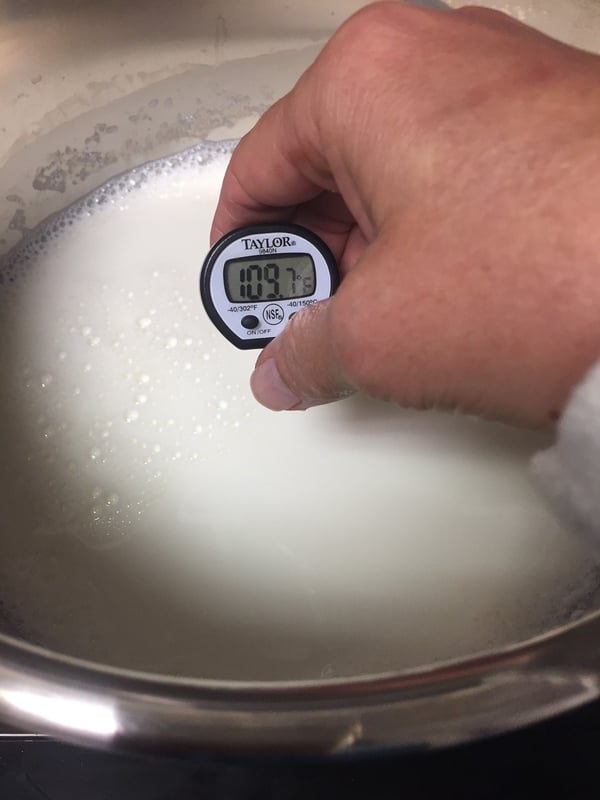
3. Add the yogurt to the inner pot and stir thoroughly.
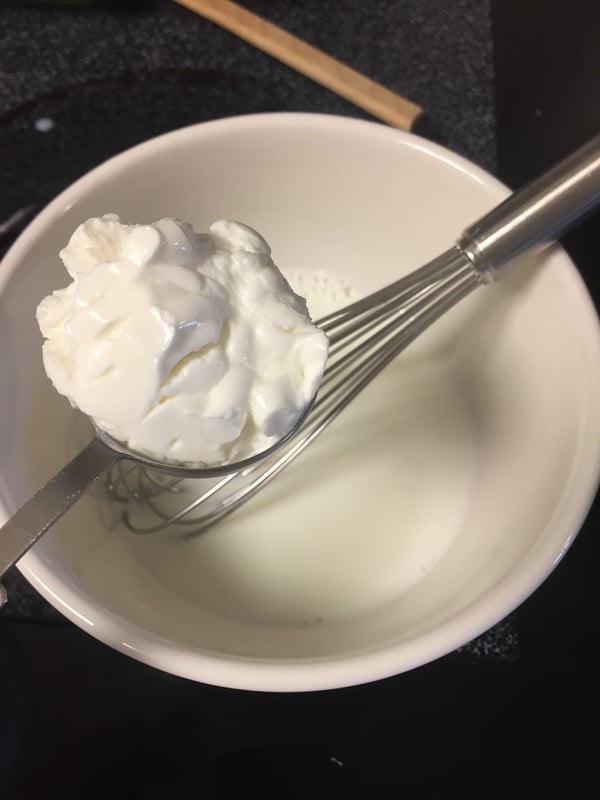
4. Return the inner pot to the Instant Pot. Press the Yogurt button and use the Yogurt or Adjust button to select the middle temperature (“Normal”). Use the − or + button to set the time to 8 hours. Close and lock the lid. Set the valve to Sealing.
5. When the cycle ends, press Cancel and remove the lid. Stir the yogurt and then use a large spoon to scoop it into a container with a lid or single-serving containers with lids. Place the covered container(s) in the refrigerator to cool, about 3 hours, before serving. Whole Milk Yogurt will keep, in an airtight container in the refrigerator, for up to 2 weeks.
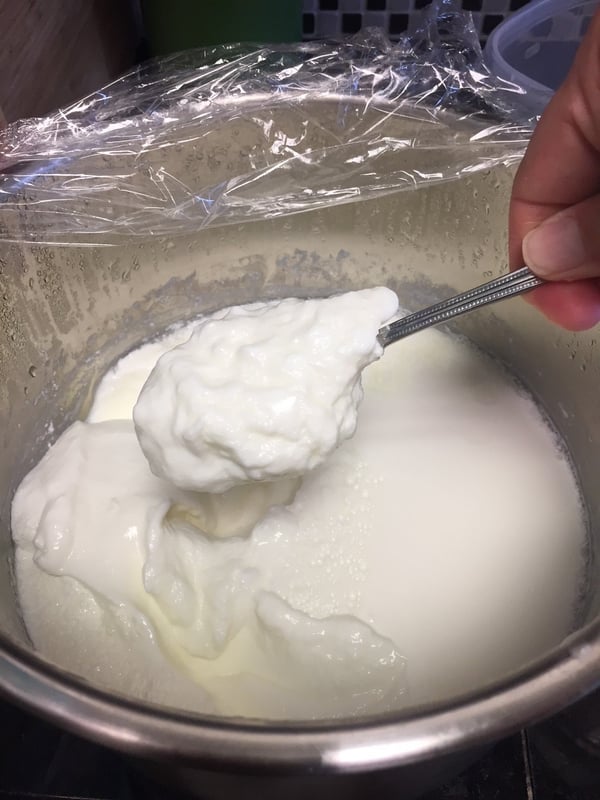
Be sure to same some of this yogurt to start a new batch!
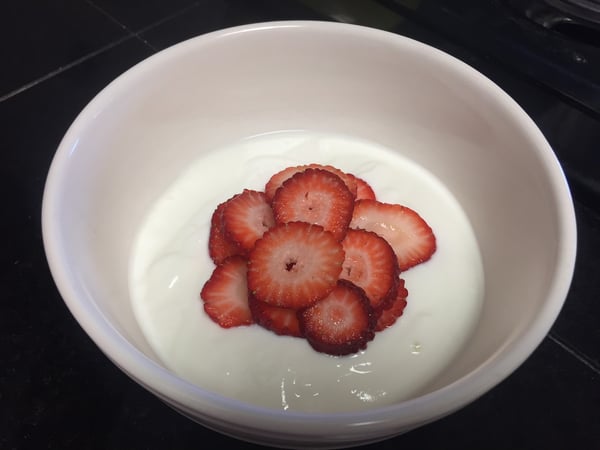
Christy loves to make her own fermented hot sauce. It takes a while to make but the results are worth it! You simply start with a hot pepper mash, add in 5% of the weight of the peppers in salt and let that sit at room temperature for 24 hours to 3-6 months. That's when the fermentation process happens. When you finish the mash with vinegar, you'll actually stop the fermentation process.
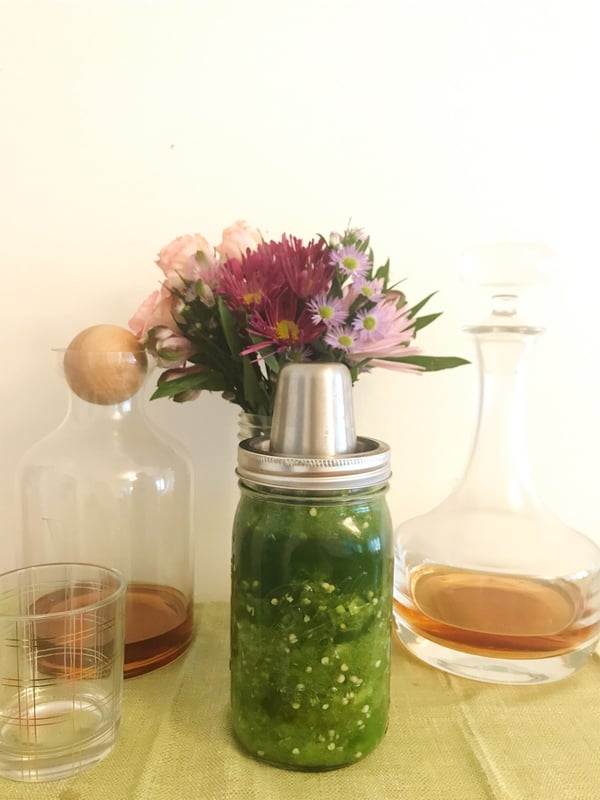
Hot Pepper Mash Fermenting
Christy offered these tips to anyone giving fermentation a go:
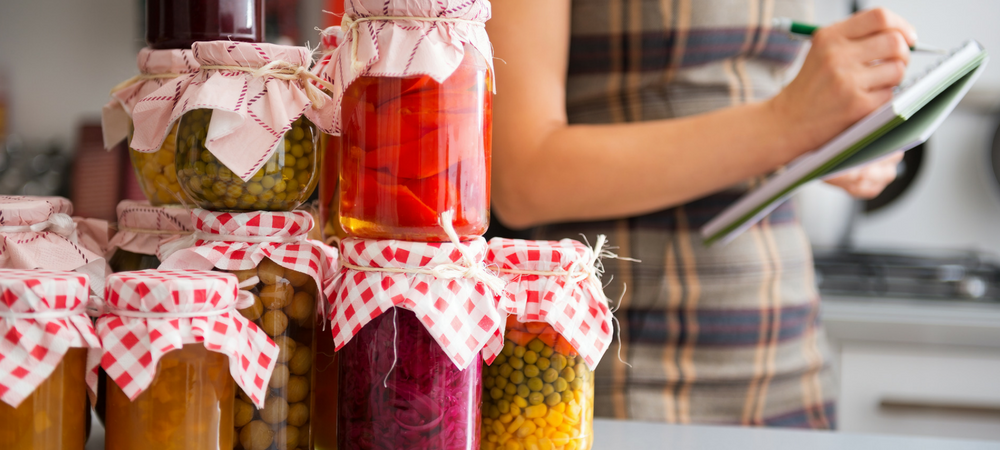
Canning is a fun activity to do with friends, but the logistics of hosting a canning party can seem overwhelming. With these 10 tips, you can keep it simple and still share the joy of preserving the last of peak season produce with others.
1. Keep the guest list small. Don't try to host more than 10 people unless you have an extra large kitchen to accommodate more guests. If you do want a larger group, stagger guest arrivals so that there aren't too many cooks in the kitchen at any one time.
2. Divvy up the goods. Assign ingredients and equipment to each person to cover all of your bases and so you don't have to bear the burden of paying for everything. As the host, perhaps you provide all of the jars for everyone since you can sterilize them all before the party. Someone else brings the salt, another the pickling spice, another canning funnels, another herbs and spices, another vinegars, etc.
3. Choose a cookbook or have proven recipes for guests to follow. Now is not the time you want to experiment with just any recipe you find on Pinterest. You want recipes from safe, reliable sources like all of these in this guide!
4. BYOB: Bring your own box. Have guests bring a box to safely transport their jars home.
5. Get crafty. Have labels, tags, strings and markers available so that everything can be labeled.
6. Delegate the produce prep from washing to chopping.
7. Load up on produce. Coordinate with guests ahead of time so you know exactly what ingredients they'll bring so that you can prepare all of the complementary flavorings. If you have friends with gardens, find out what produce is in abundance at that time and go from there by shopping at your local farmers market.
8. Do the math ahead of time. No one should be tasked with doing math during the chaos that is sure to ensure during this type of party (especially if there's a glass of wine or two involved), so have your ratios and recipes written out for guests.
9. Have "on-deck" pots on a low burner at all times so you never have to wait for water to boil. Keep in mind you'll want to have one canning pot for every three guests in order to give you two jars per person each time you process.
10. Mix and match the group. Invite experienced canners as well as friends who are new to canning so everyone can learn from each other.
We absolutely love the idea of sharing the labor for a canning party, so throw yours soon!
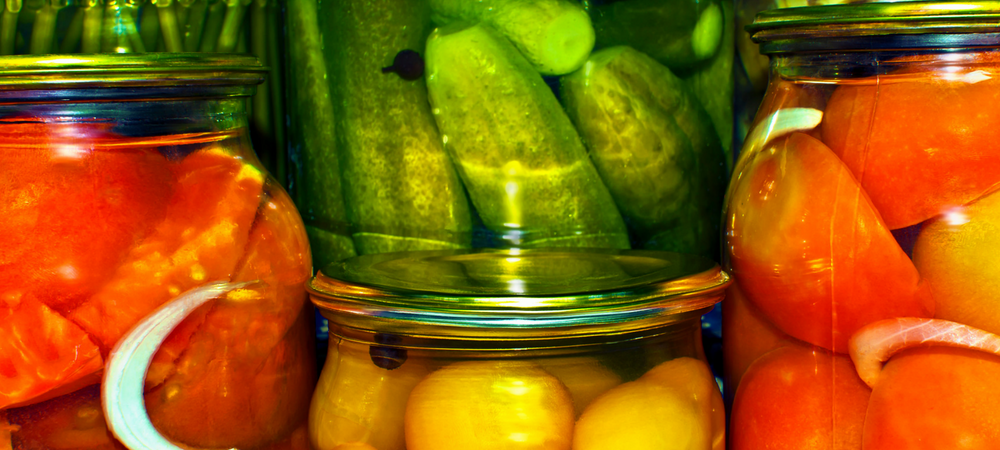
We hope this guide gave you a good base of knowledge to experiment with canning, pickling and fermenting and cleared up the differences between the three methods of food preservation. Give the recipes here a try, and let us know what you think!
Stay tuned for more canning and fermenting classes to come in 2019.
If you liked this download, check out all of our other free Cooking Resources. Happy cooking!